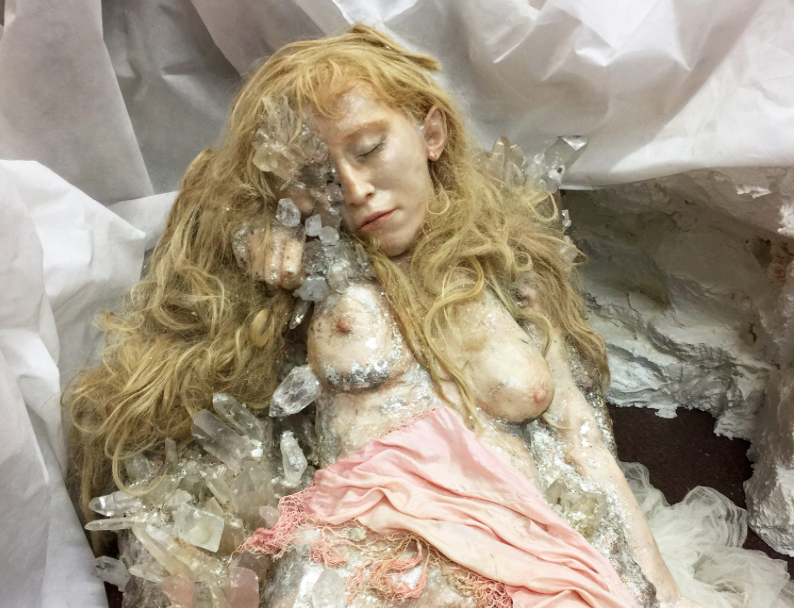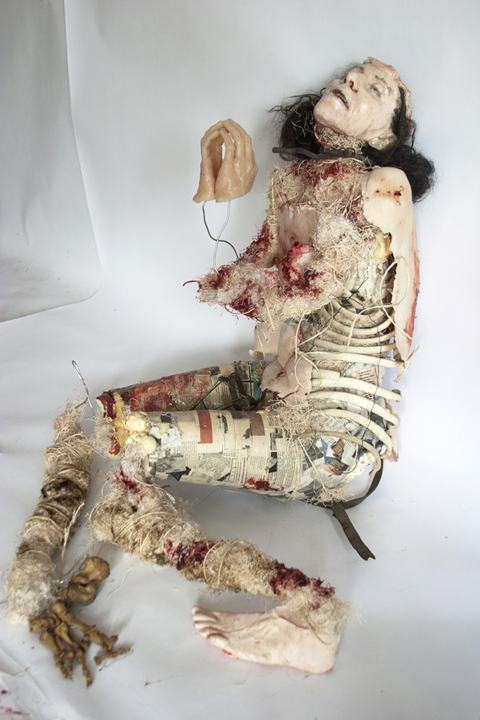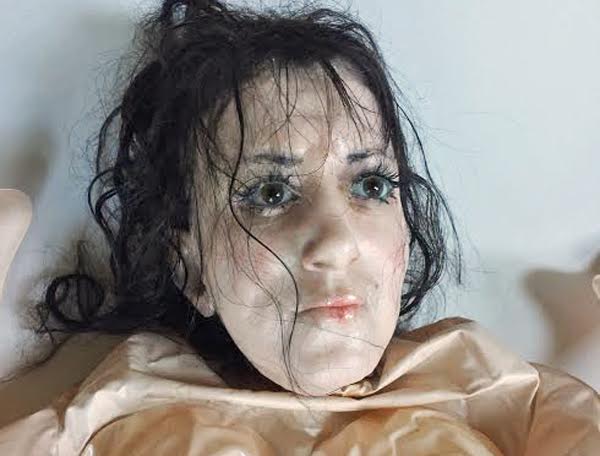I first encountered Sigrid and her work during a time when I was deeply struggling with loss, grief, and identity. Her art acted as a balm, and helped me to continue facing sometimes painful and complicated questions. I love that Sigrid’s waxworks can evoke such conflicting emotions – they are enticing, yet make you feel quite uncomfortable. Beautiful, but somehow frightening. Are you compelled to stare or, look away? – just like sex, death and mortality.
When I learned she was working in New Orleans on a new series exploring grief, I was eager to learn more, so I reached out to Sigrid to ask her a few questions.
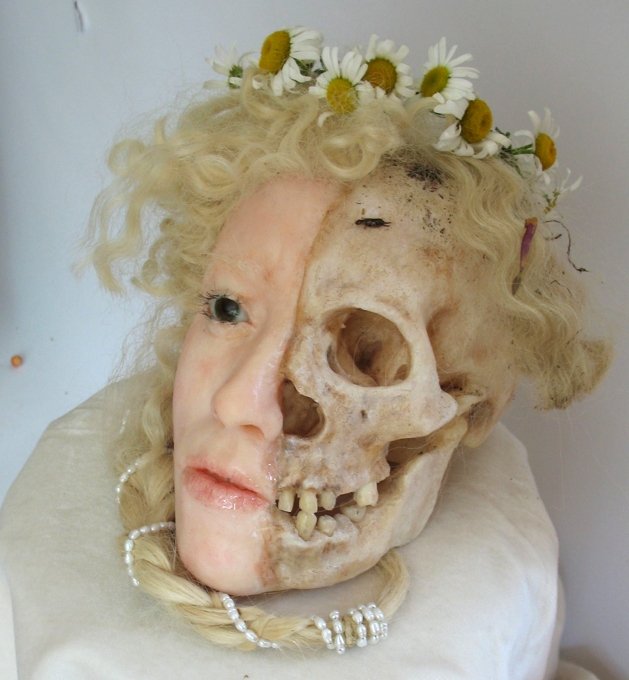
I know that before you began creating waxworks, you were primarily a painter. How and why did you come to work with wax as a medium?
In 1997 I was instrumental in helping my dad, who was my champion, transition comfortably into death. It has molded me into what I am today. The trauma associated with his dying acted as a catalyst in which I began creating new bodies of work made of wax.
Prior to that I painted. I lived in Paris and would sit at the Louvre weekly and study the Rubens and Gericault paintings to try and figure out the technique they used for flesh. Skin and flesh have always been a fetish of mine. I was painting a tryptic of Reese (my father) using the photographs I took immediately after his dying for reference. While working on a 6’ nude of him, I felt his guidance pushing through my paintbrush – all the techniques I wanted so dearly to learn happened in one fell swoop!
I returned to the states and my paintings began parring down, focusing on a single expression, i.e. a gazing eye or a drag queen’s fleshy finger with a chipped acrylic nail floating on a sea of blank canvas. Then I just stopped, having nothing more to say in that medium.
Then the passion for wax dolls, mannequins, effigies, reliquaries, nun’s fancywork, and anatomical waxworks sprouted. I began collecting and researching techniques used for various types of wax figures and life-casting. The first ‘waxworks’ were papier-mache dipped in wax obviously referencing wax dolls. As my interest expanded, so did my technique.
The obsession I have for wax comes from it’s quality. It’s fleshy and translucent, has a strength yet a fragility, not unlike that found in human nature whether corporeal or emotional.
Are there historical or cultural aspects about wax that inspire you?
I began creating life-size human figures made of wax incorporating human remains in the tradition of the doll as a magical object. The figures become talismans, reliquaries housing the human bones. The magical thinking we experience in childhood- something still very much part of me today- plays a vital role in the work, as does sexuality and human condition.
Religious iconography has made it’s mark on me since childhood. My mother used to say, how is it that at the age of six you were enthralled with images of a dying Jesus yet you were raised an atheist?! I think the wax mannequin has been of great importance as well. Being attracted to such beauty, one can find perfection in an early Iman wax head- something as women (and men) we find ourselves aspiring to be. Beauty and perfection- how silly!! But as silly as it may be we can’t deny that it’s ingrained in us all and how it affects our lives.
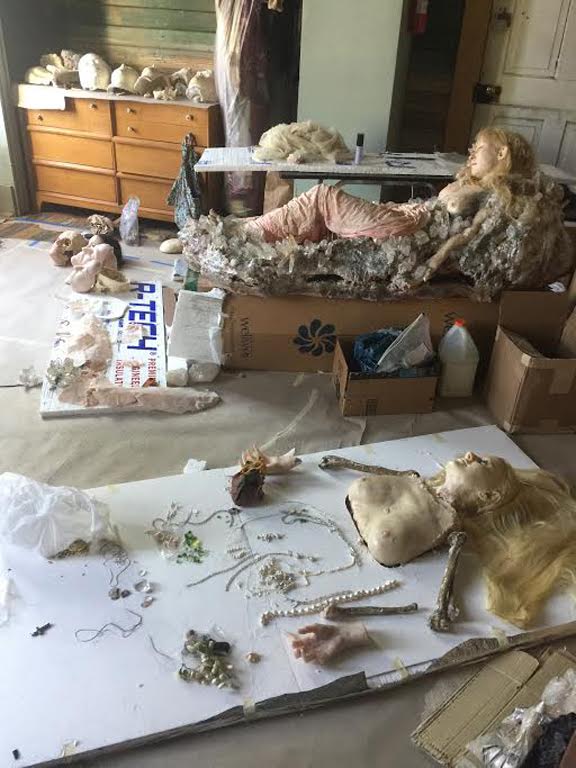 Why do you think some people find wax figures unsettling?
Why do you think some people find wax figures unsettling?
I suppose some folk find waxworks unsettling due to the uncanniness of the medium. If wax is done well the flesh looks real. The use of glass eyes and hair can bring the work to life. I’m talking about waxworks in general.
There’s such a rich history found in political/effigies, religious, magical, medical and entertainment – just look at all the horror films based on the wax museum- we like to be scared, so long as we feel safe.
Your new waxwork series is based on unrequited love and the five stages of of grief. Would you tell me a bit more (or, a lot more because I’m really excited about this project!) about the series and what you envision.
The Unrequited series is about loss and redemption. Redemption found within ourselves once we, not necessarily conquer an experience of loss, but grow and progress within that experience.
I tend to draw from the personal as well as the experiences of others, borrowing from fables, allegories and fairytales creating nightmarish vignettes of my own personal malaise blurring the lines of the assumption of the hero/villain and the universal concepts of archetypical imagery, while at the same time throwing in a lot of dark humor!
My reoccurring themes are about identity (Am I desirable or not? Do I fit in or not?), sexual identity, the roles between men and woman- role reversals, power and sex, life and death, antiquated and modernity.
The series love unrequited equates loss- something I know we all have felt to some degree. The five steps of grief, I think, helps identify the emotions that come into play. But it’s not cut and dry. There are a lot of layers going on when you’re looking at a work.
Sleeping Beauty, who portrays denial in the five steps, is in that crystallized state. Is she dead? Is she alive? What we can say for sure is that she is oh so oh alluring and sexual. She lays in the bed of crystals morphing into a crystal herself while she waits for that Mister Perfect that just doesn’t exist. At the same time she’s based off of the original Sleeping Beauty- where she was raped while in her state of repose by a king who happened to be passing through.
It’s interesting to see the reactions of men (especially if they are with a partner) when gazing upon this waxwork. I’ve seen them give furtive sideways glances, to down right staring. So yes, Sleeping Beauty is somewhat dead- in her emotions, waiting for Mister Perfect, her actually not being a living human, but yet she is so alive, a beautiful woman depicted in wax.
The blow up doll is anger, the working title is ‘I’ll make You Scream Like A Monkey! ‘. She is just so fed up of being used, abused and lied to.
Ophelia, depression in the series, dons a dress made of embroidered fresh water pearls in the form of Lily of the valley. Pearl tears wet her cheeks as she floats amongst the reeds bringing to mind a love full of hope and innocence. Even my Lothario, the villain, the straw man and emotional manipulator is a comical and sad character. The choice of all the materials used in each work is selected to represent, what I hope, a plethora of emotional responses the viewer can identify with.
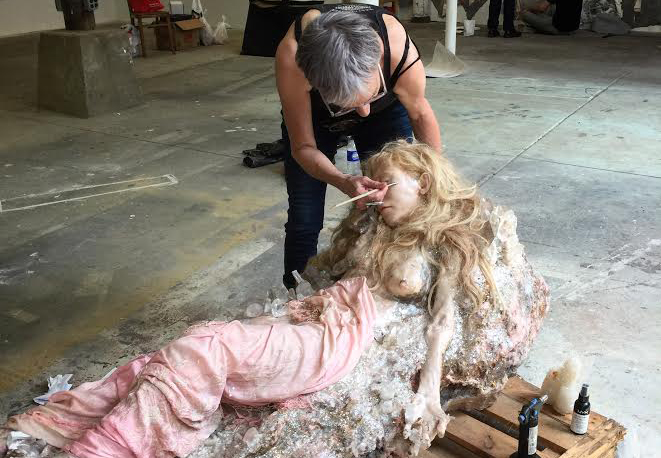
You recently shared some footage of your work on a stunning Ophelia figure for the series. Our society seems to be enthralled with imagery depicting beautiful, drowned women. Why? What does that reveal about us?
I’ve really been thinking about this question so I went around and asking strangers your question about beautiful drowned women and beautiful women dead in general, whether they were depicted in art, or graphic images found on the internet etc. Every single male response was “IF SHE’S HOT SHE’S HOT!” Didn’t make a difference if she were dead or alive. Death is still a major taboo/ fear in our culture. I think, too, it’s so much easier to immortalize and romanticize youth and beauty than to face the unknown.
Why did you choose to work on this particular series in New Orleans?
I chose to finish the series here in New Orleans for two reasons. The first being I feel at home here. There is depth in this city that one doesn’t find anywhere else in the country. It’s very similar to a European city. Death is also an accepting part of the culture here. The second is, the series is the precursor to my dream of dreams, which is opening an immersive attraction here in Nola.
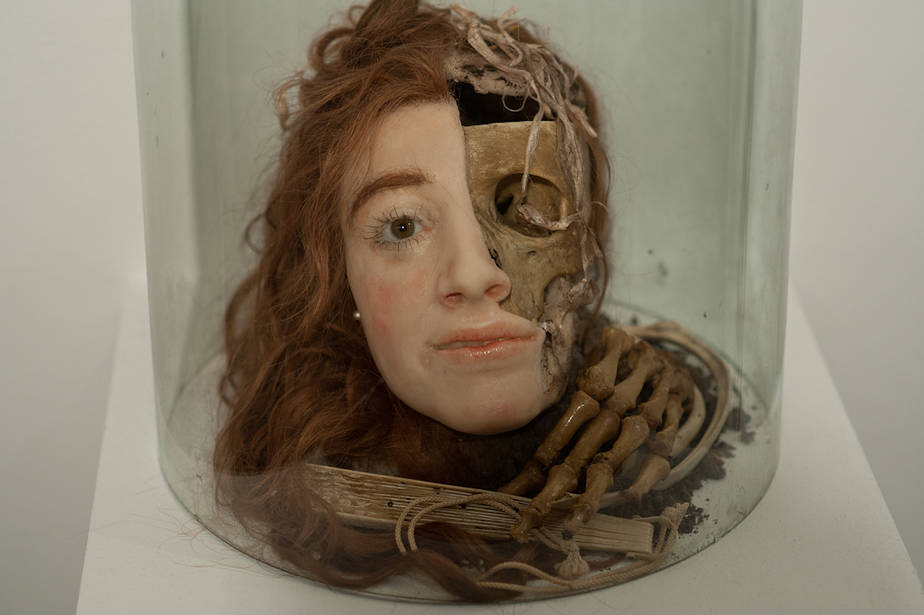
Sigrid is currently running a crowdfunding campaign, and creating a few new vanitas pieces that will be available for sale to fund her work on The Unrequited series. Also, did you catch that last bit?! “The series is the precursor to my dream of dreams, which is opening an immersive attraction here in Nola.” Let’s make this happen! You can help by sharing this piece, and/or the direct link to Sigrid’s campaign, which also features some fantastic perks, like original artwork, or the chance to spend the day with Sigrid in her studio where she will cast your own face in wax!
Click here to support Sigrid’s Waxworks.
For updates on Sigrid’s work, you can also follow her on Instagram.

